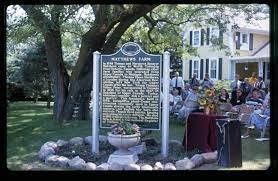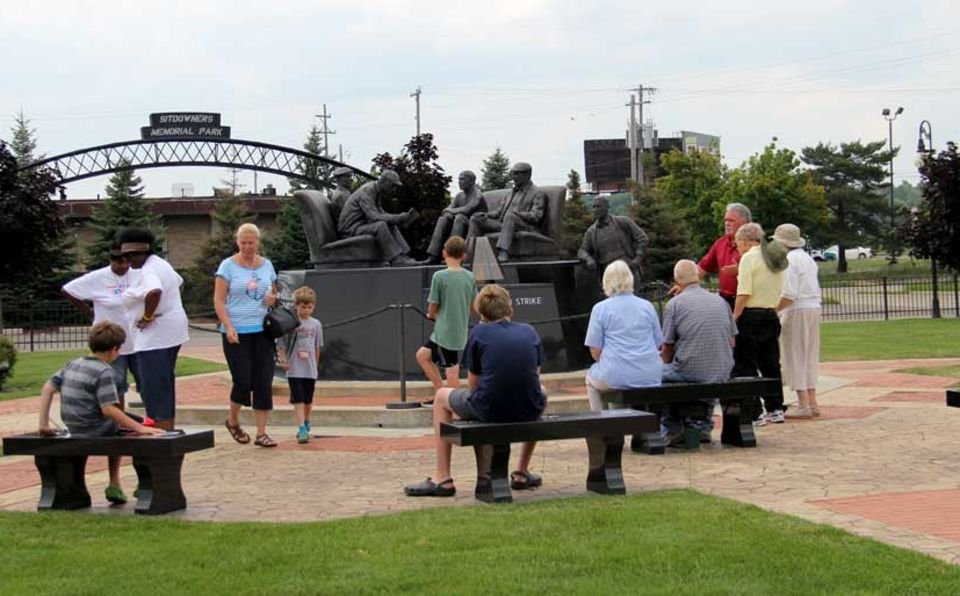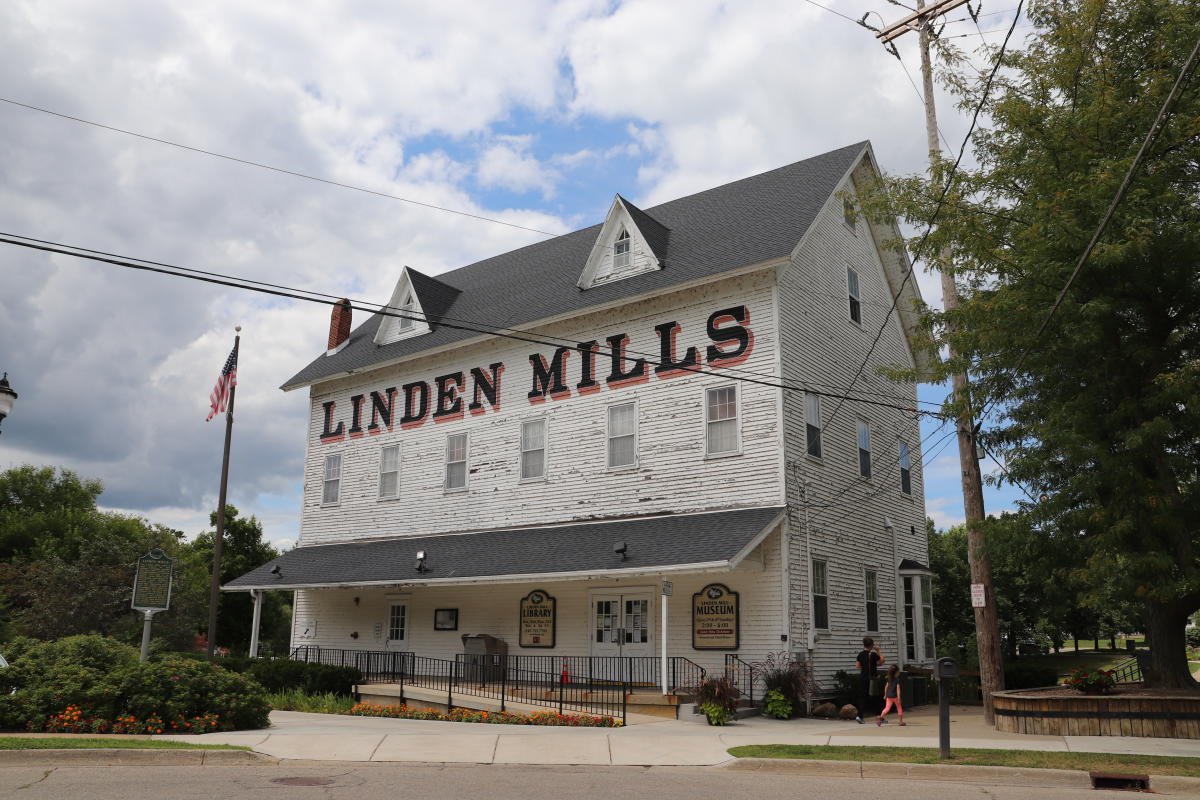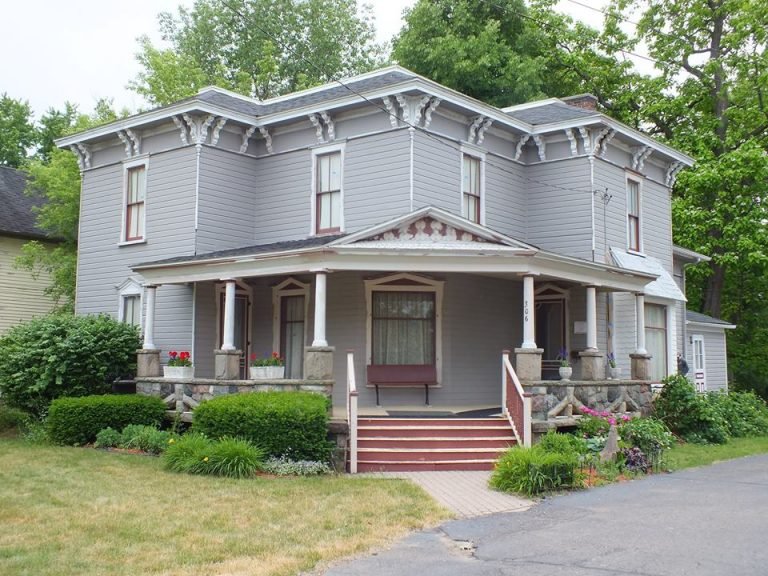Interactive History Trail Map & Listings
Select from the map below to learn more about a listing, or use the search and filter features to find listings in your area or about certain topics. Listings will initially be shown grouped together. Choose a cluster to see individual listings. LEARN MORE ABOUT HOW TO NAVIGATE THE INTERACTIVE MAP
As you filter & search, the listings below the map will update to reflect your choices.
The Port Austin Reef Light is located in Lake Huron approximately 2½ miles north of the Port Austin Harbor and Port Austin, Michigan. The station was established and first lit in 1878 and after a devastating fire, modified in 1899. It is still operational and acts as an automated beacon to this day.
Enjoy one of the nicest lighthouses on the sunrise side of Lake Huron. Enjoy a short boat ride to the lighthouse and learn about its history from friendly and informative volunteer docents. Guided tours are available on Saturdays in the summer.
The tug Sport, one of the nation’s earliest steel-hulled vessels, was built for lumber and steel entrepreneur Eber Brock Ward in 1873 by the Wyandotte Iron Ship Building Works in Wyandotte, Michigan. For forty-seven years the tug towed, salvaged, and aided vessels in distress. Frank E. Kirby designed the tug and later became a nationally known naval architect recognized for designing large, elegant sidewheel passenger steamers and ice-breaking car ferries, such as Chief Wawatam.
Named after early settler Edward Cash, the village of Cash was founded in 1851. In 1868, seven Cash residents voted to found Watertown Township to govern and serve the quickly growing area. Each man who voted held at least one township post. In 1881, Cash survived wildfires that swept across the entire county in five hours. The arrival of the railroad in nearby Watertown in 1912 ended Cash’s role as an important commercial center in the region.
In 1848 Thomas and Margaret Spencer Matthews came to Worth Township from Ontario, Canada, following other farm families who migrated from Upper Canada to Michigan. Matthews’s grandfather, Thomas Elmes Matthews, a Loyalist during the American Revolution, left New York for Upper Canada after the war. Young Thomas’s father, Peter, was executed in Toronto in 1838 for his role in the 1837-38 Rebellion of Upper Canada. Today historians consider him a patriot and a martyr.
This tall stately Gothic Style church with its elegant wood interior was built in 1874 during Sanilac County’s great lumbering era. The Reverend A. B. Flower came to Lexington as a missionary in 1869 and started this congregation known as the Church of the Good Shepherd. Among its active members was Mary Moore who married Albert Sleeper, governor of Michigan from 1917 to 1920. Sleeper served as vestryman and warden of the church until moving to Bad Axe. Since 1972 this has been the Lexington Chapel of Trinity Episcopal Church.
This Second Empire style mansion was built in the 1870s by Doctor Joseph Loop. A native of New York, Loop moved to Oakland County, Michigan, in 1843. He and his wife, Jane Gardner Loop pioneered this land in Sanilac County in 1854, and after graduating from the University of Michigan’s medical department in 1855, he opened a practice in Port Sanilac. When this home was built, he kept an office on the lower floor, and serviced a forty-mile circuit, bringing medical care to much of the county.
This picturesque cobblestone building constructed in 1898 serves as the Croswell chapel of the Trinity Episcopal Church. Its interior features wooden arches and a rood screen between the nave and the chancel.
Sudden tragedy struck the Great Lakes on November 9, 1913, when a storm, whose equal veteran sailors could not recall, left in its wake death and destruction.
Published under the motto “Our Community is our Hive. The Rights of the People, our Queen,” The Brown City Bee debuted on January 23, 1891. Owner James A. Menzies named the newspaper for the “business-like fellow” who ensures “that matters are kept `humming’ about him.” He renamed the paper The Brown City Banner in December 1891.
The Sanilac Masonic Lodge was organized in 1868. In 1883 lodge members and township officials agreed to build a combined township and Masonic hall on land donated by Christopher Odfield, a Mason. The foundation was built with three-foot-thick walls to provide refuge from future forest fires. When the cornerstone was laid on July 1, 1884, crowds turned out for the event, which was highlighted by Masonic ritual.
The first twenty-five miles of track for the Port Huron and Northwestern Railroad opened from Port Huron to Croswell in 1879. Marlette citizens lured the railroad by raising $15,000 toward construction of the tracks. The line extended from Saginaw Junction in St. Clair County to Marlette in January 1881, and the Marlette to Mayville line opened in the fall.
This handsome building was the first church erected in Buel Township. Known as the Buel United Methodist Church, it was dedicated on December 3, 1882.
Dedicated to the men and women of the historic sit-down strike of 1936-1937 at General Motors, Flint, this marble and bronze monument depicts an actual scene from inside the plant during the strike. The monument was created by Janice Trimpe, Master Sculptor. Check the website for hours of operation and special events.
The Greater Flint Area Sports Hall of Fame was created by the Bruin Club of Mott Community College in 1980. For over 40 years, the Hall of Fame has provided a vehicle for our community to recognize and celebrate the unsurpassed history of athletic achievement and community service that has been so much a part of the Flint area.
Visit the Greater Flint African American Sports Hall of Fame at the Flint Public Library (temporarily housed at Courtland Center while the main library is under renovation) - a collection of over 200 plaques and an interactive kiosk that celebrates 35 years of honoring and preserving Flint’s illustrious history in sports.
For a county of its size, Genesee County, Michigan, has produced some of the most important innovations, products, people, and social movements of modern times. Exploring its fascinating history will uncover colorful stories of people, places, and events that are powerful, surprising, moving, catastrophic, and triumphant. The mission of the Genesee County Historical Society is to preserve, promote, and document the history of Genesee County.
The Fenton Museum houses an extensive genealogy room for the Fenton and surrounding area. It has cemetery records for all over Genesee County. The Historical Society is the keeper of school history for Fenton and has an area of the Museum devoted to it. The Museum is staffed by Historical Society volunteers and is open to the public on Sundays from 1 to 4 p.m., but arrangements can be made for group tours as well.
The Steam Railroading Institute is dedicated to educating the public about steam-era railroading in Michigan and the Great Lakes Region. This includes the preservation of the skills and technology for maintaining steam locomotives by operating steam-era equipment and providing the experience of steam locomotives in actual operation.
Step back in time at the charming Linden Mills Historical Museum! Visitors can see historical treasures like the rare Beach Buggy carriage made at the Joe Beach Buggy Factory in Linden, hear sounds from a parlor phonograph, and marvel at the vintage items in the General Store. Old toys will delight the youngsters and a revered military display is of special interest to veterans. Our museum is handicap accessible. Hours are 1-4 pm on the 2nd & 4th Sunday, June through October.
The Kettering University Archives is located at Factory One in Flint. The focus of the archives is to preserve and provide access to the history of Kettering University, the automotive industry, and Flint. The Special Collections and University Archives were established in 1974, largely through the vision and research interests of Richard P. Scharchburg and members of the University’s Alumni Foundation. The nexus of the collection was the acquisition of the William C. “Billy” Durant Collection from Durant’s widow, which has grown into a collection in excess of 4,500 linear feet of documents (manuscripts and photographs, mainly), plus several hundred books and other “artifacts.”
The Hadley House Museum, built in 1873, is a Victorian Italianate style home with original woodwork and four bedrooms. The first occupant was Dr. Daniel D. Bartholomew, who lived and practiced there until the early 1900s. Afterward, the residence was continually occupied by the Hadley family, from one generation to another. Tom and Arlene Hadley were the last private owners, and in 1986, Arlene Hadley sold her lovely home to the Holly Historical Society. The society had outgrown its first museum, the Patterson House, on East Maple Street.
The Flint Cultural Center invites you on a journey of discovery and imagination to a place where you can experience entertainment, embrace knowledge, and dream beyond the world you know. As home to a group of nationally-recognized cultural institutions aimed at furthering the arts, sciences, and humanities, the FCC offers a truly unique educational and entertainment resource. Through live performances, unique exhibits, classes, and more, the FCC brings it ALL within your reach.
Declared a National Historic Landmark in 1978, the Durant-Dort building served as the focal point for William C. Durant and J. Dallas Dort's promotional activities in the carriage and automobile businesses from 1896 to 1913 and is credited with being the 1908 birthplace of General Motors. It remains the last physical link to Durant's pioneer efforts in the carriage and automobile business.
The village of Vernon Center (now Durand) was built up around the railroads in the late 1850s. After the rapid expansion of the railroad in the 1870s, the village incorporated itself as Durand in 1887. This was a very busy station as the Grand Trunk Western and Ann Arbor Railroads crossed at grade there. During the early 1900s when the railroad industry was at its peak, 42 passenger trains, 22 mail trains, and 78 freight trains passed through Durand daily. Durand Union Station handled approximately 3,000 passengers per day, making it a prospering hub of the industry.
Clio's beginning was almost by accident. Until the building and completion of the Flint and Pere-Marquette Railway in 1861, Clio's history was comparatively uneventful. Pine forests occupied a portion of its site, and hundreds of acres of the same valuable timber were standing in its immediate vicinity, but the stupid cupidity which actuated one or two men in or near the old village of Pine Run during the building of the railways was Clio's opportunity, and this new avenue of commerce, which would have more fully developed and built up a neat little village, already an important trading and manufacturing point, was divided from its proposed route. Pine Run was given the go-by and the station of Clio was established in its place.
Applewood is the historic home of automotive pioneer Charles Stewart Mott and family. While many wealthy men of C.S. Mott’s time built even bigger and more imposing homes meant to impress, the house at Applewood was created for family and friends and reflects this in its warm and intimate interior. Built on a 65-acre plot of land to accommodate a gentleman’s farm, the original buildings include the main house, garage, barn, chicken coop, and gardener’s cottage.
The cornerstone was laid on May 4, 1904, before the largest gathering in the county’s history. The courthouse, with its elegant clock tower and columned facade, still houses most of the major county offices.
When they were not needed at home, most children attended a one-room school about a quarter-mile west of here, just north of Beard Road. By the early 1880s, enrollment had surpassed the building’s capacity which then led to this two-room school house.
In 1870 Father Joseph Kraemer became pastor of a Catholic mission at Corunna that included all of Shiawassee County. In 1874 he assisted Antrim Township Irish Catholics in purchasing the Alling Schoolhouse, which he dedicated as a church.




























